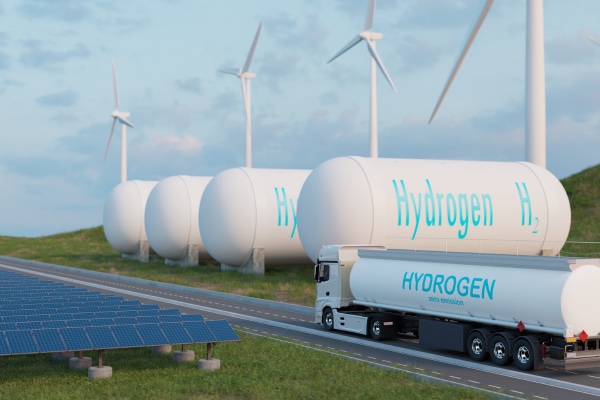
Namibia and South Africa are emerging as pioneers of green hydrogen development in Southern Africa as foreign investment and interest continue to increase. However, these developments are received with equal optimism and scepticism by the local communities. Both countries have an abundance of clean energy resources like solar, wind power and excellent geographical locations to take advantage of in the new world order that is looking to go green.
Namibia’s shift to green hydrogen
Namibia intends to b ecome a global centre for producing and exporting green hydrogen. The country sees green hydrogen as important for boosting industries and economic growth considering its abundant solar energy and vast government-owned land.
There is great international interest in Namibia’s plans. The European Investment Bank has pledged €500 millionfor green hydrogen projects, and the Netherlands’ Invest International plans a $1 billion fund. Belgium’s King Philippe visited Namibia in May 2024 to launch a $30 million green hydrogen project near Walvis Bay.
Belgium’s Energy Minister, Tinne Van der Straeten, emphasized the European Union’s dedication to sourcing renewable hydrogen from competitive suppliers like Namibia during her visit to the Cleanergy Solutions project. She stated, “We are fully committed to the journey of hydrogen and green hydrogen.” These projects are expected to create thousands of green jobs. However, local communities fear that most of these projects may benefit foreign investors, leaving them with little to benefit.
South Africa’s role
South Africa also intends to promote itself as an important key player in the Southern African green hydrogen market. In May 2024, the Western Cape and Northern Cape provinces signed an MoU with Namibia and Dutch stakeholders to explore building a cross-country hydrogen pipeline plan connecting the two countries.
The South African government is reviewing the green hydrogen plan and aims to fuel huge expenditure on green hydrogen facilities. Green hydrogen could contribute towards the de-carbonisation of the mining sector in South Africa, and potentially improve means of low-emission transport solutions.
Energy has always been a challenging issue in South Africa. The country has gone through rolling blackouts and electricity tariffs have been on the rise. The recent 12.74% hike in electricity tariffs by the National Energy Regulator of South Africa (NERSA) has really stretched the pockets of most households. These problems are further worsened by the country’s aging coal-fired power plants, hence the urgent need to adopt renewable sources of power.
Public sentiment and concerns
The introduction of green hydrogen in Southern Africa has significant socio-economic implications and the potential to greatly impact the regional economy. This shift can revolutionize agriculture, generate new green jobs, and create economic value through energy exports. However, it might also lead to job losses in the fossil fuel industries, necessitating workforce reskilling. “If we capture even half of the benefits,” says Namibian Economic Advisor James Mnyupe, “the Namibian economy will change fundamentally.”
The prospect of job creation, economic expansion and less dependence on fossil fuels have received widespread praise.However, concerns are being raised regarding the scope and speed of these projects. The public worry about ensuring that the benefits are shared fairly.
There are raised doubts in South Africa about the government’s capability to manage new, large-scale energy projects effectively. These frustrations are due to poor service delivery, including repeated power cuts and water shortages.
The exit of traditional energy companies like Shell from South Africa adds to uncertainty about the future stability of the energy sector. While some people view this as an opportunity to give the local companies a chance, others see potential problems of increased instability and higher energy price fluctuation in the short term.
A path forward
For both South Africa and Botswana to attain the desired outcomes of the green hydrogen projects, they need to address a number of critical issues. The need to advance infrastructure and support inclusive economic development cannot be overemphasized. Also, transparent communication and genuine engagement with citizens will be crucial to buildingpublic support and trust. It’s important to make sure that the economic benefits are shared widely and that local workers are trained and hired in these new industries.
As these countries begin their green hydrogen journey, all eyes of the world will be watching. Success could place the two countries as torchbearers in the global transition to sustainable energy which will provide a model for other nations to follow. However, failing to address the underlying challenges could result in missed opportunities and increased public dissatisfaction.
With green hydrogen comes hope for a better future. The key to success is to navigate this journey with careful planning, robust infrastructures and policies that would not burden the local communities but enrich them. South Africa and Namibia can then fully realise the potential of Green Hydrogen and press on with the transition of their energy mix and economies.
Author: Kimberley Asah Netshivhale
Commentary from the German perspective
The German government anticipates enormous demand in the next decade. The demand will be so great that the required hydrogen cannot be produced in Germany alone. The Federal Ministry of Economics is therefore assuming a demand of 50 – 70 per cent, which will have to be imported from abroad. So far, the plans only exist on paper. Huge amounts of renewable electricity are needed. However, this is often still in short supply in Africa. Renewable electricity can be produced cheaply in Namibia. This must be converted into ammonia, a molecule consisting of three atoms of hydrogen and one atom of nitrogen. The ammonia can then be transported to Germany relatively easily. Here, the molecule has to be split into its elements again. Additional energy has to be converted for processes. This makes green hydrogen more expensive. Both Namibia and South Africa, where many people have no access to electricity and frequent power cuts, still have too few renewable energy sources. For this reason, socio-economic circumstances must be taken into account, especially because of the colonial past.
Author: Dr Thomas Isenburg, science journalist
Already published:



